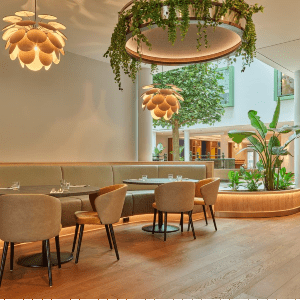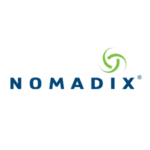The Dutch hotel market has increased again over the last year, as shown in the HOSTA 2016 report from consulting agency Horwath HTL. Both the average occupancies as the average room rates in the Netherlands have increased. As a result, the total revenues per hotel room increased by 13% and the profit per hotel room increased by 5%. The higher results were achieved despite the increase in the Dutch hotel supply. For the coming years, influenced by Brexit and the threat of terror attacks, a lower growth in both occupancy and average room rates is expected.
In Belgium, the hotel market is suffering after the terrorist attacks in Brussels in March. The occupancies have dropped significantly this year, and the average room rates are also in decline.
Netherlands
The research by Horwath HTL shows that the average occupancy in the Netherlands increased in 2015 from 69.5% to 71.4%. This brings the occupancy to the highest level since 2007. The occupancy in the Netherlands has increased for the third year in a row.
The average room rates in 2015 increased by 6%, from € 96 to € 102. Following the similar increase in 2014, the average room rates are now at the highest level since 2008.
The Total Revenue Per Available Room in the Dutch hotels increased by 13% in 2015, to € 129. The profits, expressed as a percentage of total revenues, decreased slightly, from 38.1% to 35.1%. The Gross Operating Profit Per Available Room however increased by 5%, to € 46.
The forecast for 2016 shows a further increase of the Dutch hotel market. The expectations are that the average room rates will increase by 1.9 percentage points. For 2017 however the hotels are less optimistic: the average occupancy is expected to increase by only 0.3 percentage points then. The average room rates are expected to increase by approximately 2% in both years.
The expectations are lowered due to the expected influence of the Brexit, and the threat of new terrorist attacks in Europe. Other developments that concern the Dutch hotel managers for the coming years include the economy, the increase in supply and – in some cities – the rise of airbnb.
Amsterdam
In the Amsterdam & Schiphol area, the average occupancy increased by only 0.2 percentage points last year, from 80.6% to 80.8%. The average room rates however increased by over 5%, from € 118 to € 124. Both the occupancies and the average room rates in Amsterdam are significantly higher than in the rest of the Netherlands.
The forecast for the Amsterdam & Schiphol area is also cautious. The occupancy is expected to increase to 82.6% in 2016, but may then drop to 80.9% in 2017. The average room rates are expected to continue to increase, to € 125 in 2016 and € 130 in 2017.
Internationally, Amsterdam is one of the few cities performing as well as it is. Data from STR shows that the occupancies and average room rates increased again in the first half year of 2016. Cities such as Paris and especially Brussels are showing a strong decrease in occupancies and/or average room rates, as a result of the recent terrorist attacks in those cities. Berlin is still showing an increase in occupancies and average room rates, but at a much lower growth rate than Amsterdam.
Hotel supply absorbed by market
The research by Horwath HTL shows that the supply in most cities in the Netherlands has increased in the last few years, but that this increase has been absorbed by the market. The increase in the hotel room supply in cities such as Amsterdam, The Hague, Utrecht and Eindhoven was between 27% and 51% over the past 5 years, but the occupancies in these cities has increased or remained fairly stable during this period. This shows that the new hotel supply has been absorbed by the growth in demand. One exception is Rotterdam, where a rapid supply growth resulted in a decrease in occupancy by 3 percentage points. Another exception is Maastricht, where no increase in supply was recorded due to a strict municipal hotel policy. Here, as well, both occupancies and average room rates increased.
Belgium
The occupancy in the Belgium hotels decreased from 74.3% to 72.8%. This is the first time since 2009 that the annual occupancy has decreased. The average room rates increased in 2015, from € 90 to € 92. The RevPAR, the Revenue Per Available Room, remained stable at € 67.
In the first months of 2016 the occupancy also decreased slightly, while the average room rates continued to increase. After the terrorist attacks on March 22 however, the demand for hotel rooms in Belgium decreased significantly. In the months April-June, STR data shows that the occupancies of the Belgium hotels was approximately 15 percentage points below the level of 2015. In Brussels, the decrease in these months was over 20 percentage points. The average room rates remained stable directly after the attacks, but are showing a decrease as well in June and July.



















